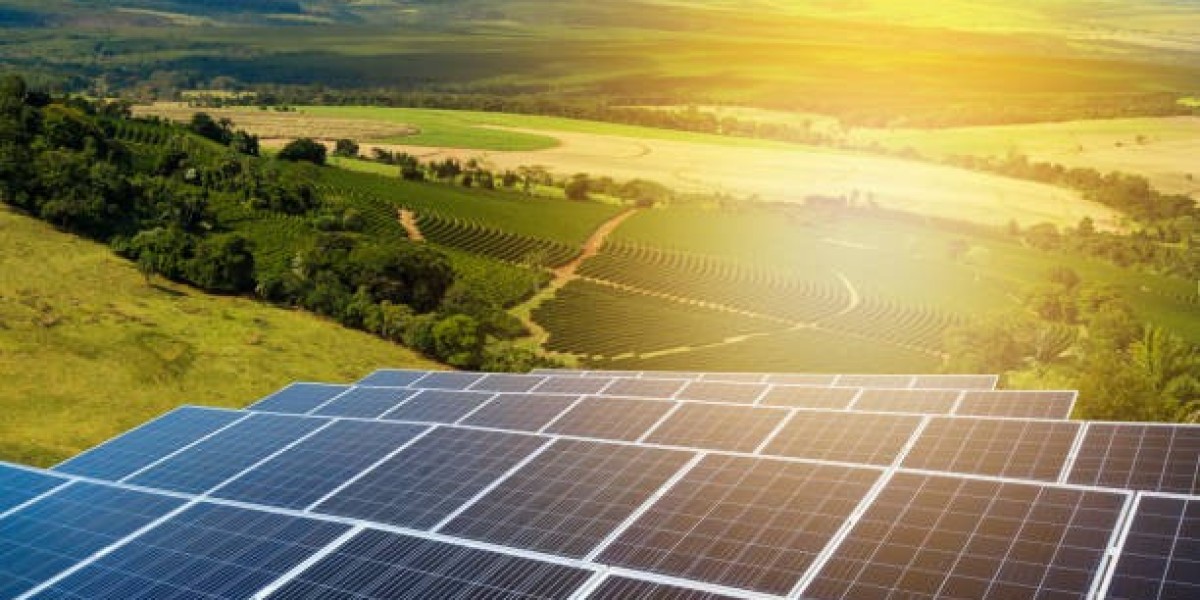Introduction
The Indian rooftop-solar boom has homeowners racing to understand mono&polycrystaline solar panels and how each one affects payback, aesthetics, and long-term reliability. Yet most guides drown you in jargon instead of clear answers. This article—Choosing Between Mono and Polycrystalline Solar Panels for Your Home—breaks everything down in plain language, so you can pick a system that earns more kilowatt-hours and fewer headaches.
1 | How Each Panel Is Made
Monocrystalline (Mono)
Crafted from a single, continuous silicon crystal pulled from an ingot.
Cut into uniformly black wafers that let electrons flow freely.
Polycrystalline (Poly)
Produced by melting silicon fragments together in square moulds.
Cools into visible crystal “grains,” creating the familiar blue, speckled pattern.
Why it matters: The pure lattice inside mono cells boosts their efficiency, while poly saves material and furnace time—hence the price gap.
2 | Efficiency: Power per Square Metre
| Metric | Monocrystalline | Polycrystalline |
|---|---|---|
| Cell efficiency (lab) | 22 – 26 % | 18 – 21 % |
| Typical module efficiency | 18 – 23 % | 15 – 18 % |
| Wattage per m² | 190 – 220 W | 160 – 185 W |
If space on your rooftop is limited—think city terraces, apartment balconies, or north–south-split roofs—higher efficiency quickly pays off. On a large, shade-free farm shed, that extra power density matters less, making poly a credible budget choice.
3 | Temperature & Weather Performance
Heat tolerance: Mono panels typically lose about 0.35 % output for each degree above 25 °C, whereas poly panels drop closer to 0.40 %. In Delhi’s 40-plus-degree summers, that small percentage stacks up to real rupees saved.
Low-light behaviour: The higher voltage of mono cells helps them switch on earlier at dawn and linger later at dusk—handy during the monsoon’s cloudy mornings.
Partial shade: Both technologies rely on bypass diodes, but mono’s stronger baseline output cushions shade losses better.
4 | Up-Front Cost vs Lifetime Value
Sticker price: In today’s Indian market, poly modules cost 8 – 15 ₹ less per watt than similar-sized mono modules.
Balance-of-system (BOS): Because monos generate more power per panel, you need fewer modules, rails, clamps, and DC cables—shrinking that price gap.
Levelised Cost of Electricity (LCOE): Spread over 25 years of generation, mono often wins by a nose, especially where grid tariffs exceed ₹6 per unit or where net-metering credits every exported kWh.
5 | Looks & Curb Appeal
Monocrystalline: Jet-black cells framed in anodised aluminium blend into modern rooftops and façades—perfect for villas, heritage hotels, or any project where aesthetics can raise property value.
Polycrystalline: Blue mosaic panels announce their solar identity loudly. Great for factory roofs, pump houses, or rural cottages where function trumps fashion.
6 | Durability & Warranty
| Feature | Monocrystalline | Polycrystalline |
|---|---|---|
| Typical performance warranty | 84–86 % at year 25 | 80–82 % at year 25 |
| Micro-crack resistance | Slightly higher | Good |
| Tech evolution | Rapid (PERC, TOPCon, HJT) | Plateauing |
Both panel types pass IEC hail-impact, thermal-cycle, and salt-mist tests. But mono manufacturers now offer 30-year linear-performance warranties on premium lines, signalling confidence in long-term stability.
7 | Environmental Footprint
Energy payback time (EPBT): Mono panels typically “repay” the energy spent on manufacturing within 13–15 months under India’s strong sun; poly panels need roughly 16–18 months.
Material utilisation: Poly recycles silicon kerf (sawdust-like off-cuts) from wafer slicing, wasting less raw silicon.
End-of-life: Both can be recycled into glass cullet, aluminium ingots, and silicon feedstock. Extended Producer Responsibility (EPR) rules in India ensure manufacturers reclaim old modules.
8 | Real-World Examples
Case Study A — Urban Dwelling in Pune
Roof area: 30 m², partly shaded by a water tank.
Chosen tech: 4 kW monocrystalline array (19.8 % efficiency).
Annual generation: ~6,400 kWh.
Payback: 4.7 years thanks to net-metering and high grid tariffs.
Case Study B — Poultry Farm near Hyderabad
Roof area: 200 m² of open shed.
Chosen tech: 15 kW polycrystalline array (17.2 % efficiency).
Annual generation: ~22,800 kWh.
Payback: 5.3 years—extra space made low-priced poly modules the economical winner.
9 | Tech Trends Favouring Mono
PERC (Passivated Emitter Rear Cell): A reflective rear layer bumps efficiency 1–2 %.
TOPCon (Tunnel Oxide Passivated Contact): Shrinks resistance losses, pushing commercial modules past 24 %.
HJT (Heterojunction): Fuses crystalline and amorphous silicon layers, promising 26 % lab efficiency and better high-temperature endurance.
These innovations largely target monocrystalline wafers, widening the performance gap over time.
10 | Quick Decision Matrix
| Your Situation | Recommended Panel | Why |
|---|---|---|
| Limited roof area, high city tariff | Monocrystalline | Max kWh per m² = faster ROI |
| Spacious rural shed, cap-ex sensitive | Polycrystalline | Lowest rupees per watt |
| Architect-designed home, visible roof | Monocrystalline | Sleek black finish |
| Ground-mount system with land surplus | Polycrystalline | Scale cheaply |
| Hot coastal climate, corrosive air | Monocrystalline | Lower temperature losses |
11 | Questions to Ask Your Installer
Shadow analysis: How many hours of full sun will each roof segment receive in January and May?
System sizing: Will your array offset 100 % of today’s consumption plus future EV charging?
Warranty terms: Is the performance guarantee linear or step-down? Who handles service calls?
Inverter match: Are you using a string inverter or micro-inverters for shade resilience?
After-sales support: Is spare-parts stock locally available for at least ten years?
12 | Financial Checklist
Compare LCOE, not just module rate. Ask for a 25-year cash-flow table showing annual savings, degradation, and service costs.
Factor BOS savings. Fewer panels can mean lighter mounting structures and lower labour costs.
Consider bank financing. Several Indian lenders offer green-home loans at subsidised interest for rooftop solar.
Include insurance. Monsoon storms can hurl debris; insure your array like any other asset.
13 | Installation Best Practices
Tilt Angle: Aim for your latitude (±10°) to balance summer and winter production.
Ventilation Gap: Leave at least 100 mm under panels to cool them naturally.
Cable Management: Use UV-rated conduits to prevent rodent bites and sun damage.
Earthing & Lightning Arrestors: Protect electronics—especially in thunder-prone zones.
Monitoring: A Wi-Fi logger or app lets you spot faults before they slash output.
14 | Maintenance Snapshot
Cleaning frequency: Every two weeks in dusty regions; monthly in coastal areas.
Visual checks: Look for cracks, hotspots, or bird droppings; act fast to keep generation steady.
Annual audit: A technician should test Voc, Isc, and insulation resistance to catch hidden faults.
15 | Frequently Asked Questions
Q: Can I mix mono and poly panels on the same roof?
A: Yes, if you run them on separate Maximum Power Point Tracker (MPPT) inputs or separate inverters to avoid mismatch losses.
Q: Will poly panels disappear soon?
A: Not yet. They remain popular in utility-scale parks and off-grid projects, though new manufacturing capacity increasingly favours mono.
Q: Does black colour make mono panels hotter?
A: The cell colour is internal; surface temperatures depend more on ventilation and irradiance.
Conclusion
Choosing Between Mono and Polycrystalline Solar Panels for Your Home boils down to three practical questions:
How much roof space can you dedicate?
How quickly do you need payback?
Does appearance influence your property’s value?
If space is scarce, aesthetics matter, and long-term output is the priority, monocrystalline stands out. If you own plenty of roof area or ground space and want the lowest initial outlay, polycrystalline is a proven workhorse. Either way, going solar today shields you from rising grid prices and shrinks your carbon footprint for decades to come. Make the choice that fits your roof, your wallet, and your vision of a cleaner future.








